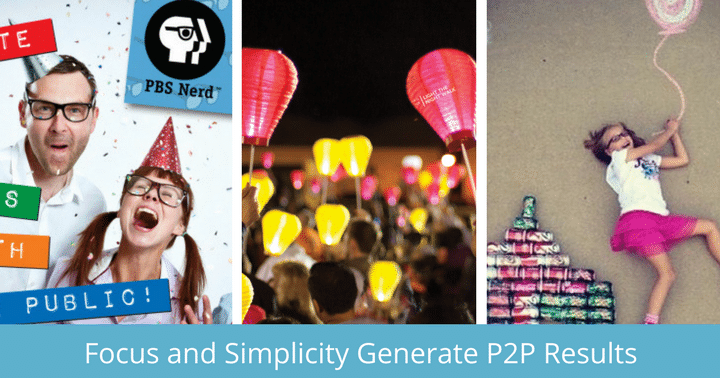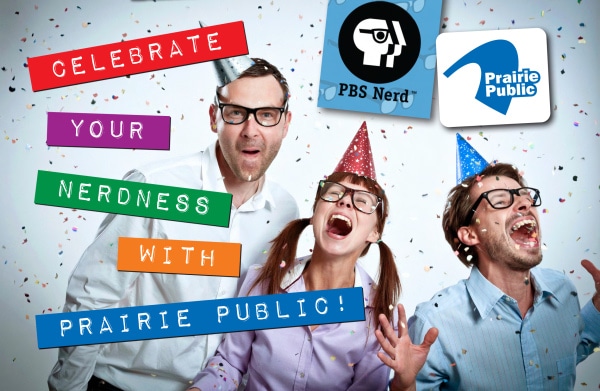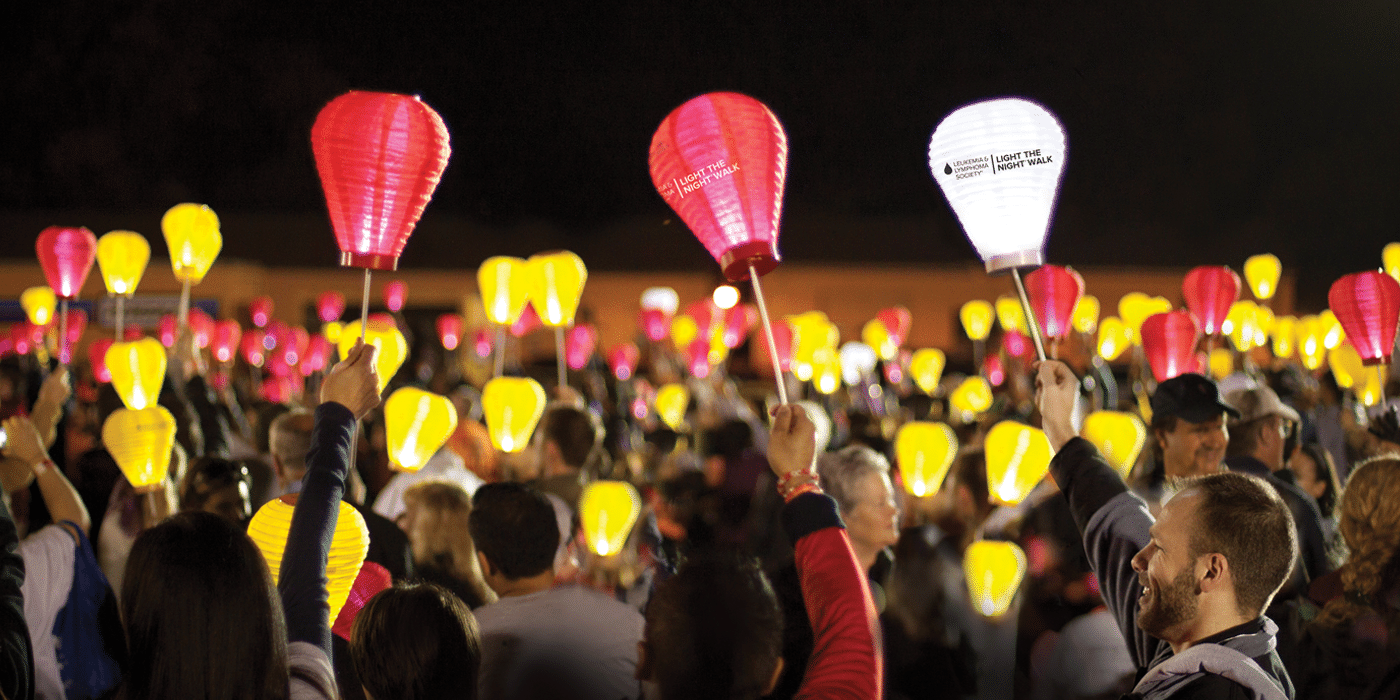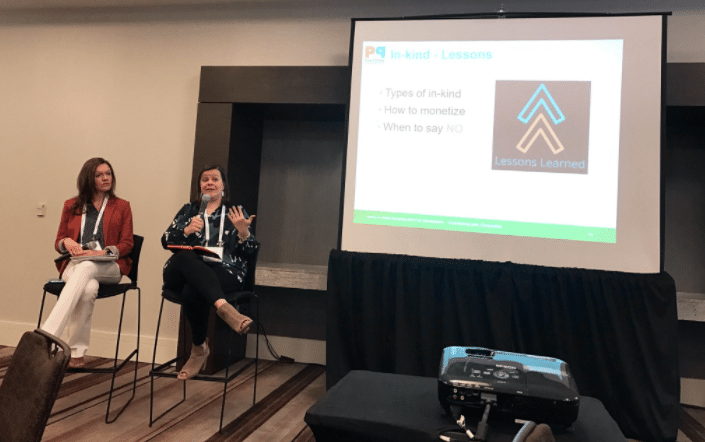
By: Stacey Goldberg, Vice President, For Momentum
I was fortunate to join more than 450 colleagues representing hundreds of health, education and social causes at the Peer-to-Peer Professional Forum Conference in Atlanta. We were there to learn best practices and network with our peers and clients, the people responsible for events that rely on peer-to-peer (P2P) fundraising. Those fundraisers could be the traditional walk/run/bike events, endurance events (e.g., marathons/triathlons), do-it-yourself (DIY) events or virtual events.
Behind the P2P Numbers
As is tradition, the conference started with a “Behind the Numbers” trends report of the top P2P events. Jeff Shuck and Jennifer Mulholland of Plenty broke down the numbers for us. At first glance, fundraising revenue from the top 30 P2P events appears to be trending slightly down over the last eight years. Some of the major events have seen significant losses, such as the American Cancer Society’s Relay for Life, Komen’s Race for the Cure and Leukemia & Lymphoma’s Team in Training.
However, the outlook shifts significantly when you remove the Relay for Life numbers. While Relay, Komen’s 3-Day and Team in Training lost half of their combined value, the rest of the index has grown 20 percent since 2008. Many other events, such as Memorial Sloan Kettering’s Cycle for Survival, the St. Jude Heroes Program and Leukemia & Lymphoma’s Light the Night, have seen gains. Overall, P2P events continue to bring in significant revenue for nonprofits.
Over the two-day conference, we often heard “there is no magic bullet” and “one size does not fit all” in terms of how to flourish. Still, some key themes emerged. Here are For Momentum’s top five takeaways:
Top Five Takeaways from the 2017 P2P Forum Conference
1. Innovation Is Key. Successful programs are constantly challenging the status quo and seeking ways to rejuvenate P2P events. How can events use social, digital and other new technologies? Public Broadcasting Service (PBS) led a session on breaking away from their on-air fundraising drives to appeal to a younger audience. PBS launched a 14-station P2P fundraising pilot that tapped into audience segments interested in different PBS programming. The campaign used social and digital channels to invite supporters to participate in events, challenges and activities to raise money and awareness for public media.
2. Embrace Your Brand. For PBS, embracing their brand meant bringing out their “inner nerd.” One of the 14 pilot stations, Prairie Public Broadcasting encouraged viewers to openly celebrate their geeky ways. This “Celebrate Your Nerdness” messaging resonated with many of PPB’s different audience demographics. Be sure to ask yourself early and often, “What makes our event unique?”
 3. Spotlight Purpose. Integrate mission in relevant and meaningful ways with a rally cry and unifying anthem. Light the Night representative Coker Powell talked about the meaning behind the lanterns that light up in the sky at each Light the Night event. These lights are not just a gimmick; they symbolize how the Leukemia & Lymphoma Society brings light to so many who live in the darkness of cancer. This is a unifying symbol for all events.
3. Spotlight Purpose. Integrate mission in relevant and meaningful ways with a rally cry and unifying anthem. Light the Night representative Coker Powell talked about the meaning behind the lanterns that light up in the sky at each Light the Night event. These lights are not just a gimmick; they symbolize how the Leukemia & Lymphoma Society brings light to so many who live in the darkness of cancer. This is a unifying symbol for all events.
 4. Sharpen the Focus. Make it simple for participants. Successful events don’t try to be all things to all people. Aria Finger of DoSomething.org spoke about engaging millennials. According to Aria, reducing choice from three opportunities to one opportunity increases conversion by 150 percent. She spoke about a simple campaign of recycling just five cans to help save the environment. In just one week’s time, over 85,000 young people participated.
4. Sharpen the Focus. Make it simple for participants. Successful events don’t try to be all things to all people. Aria Finger of DoSomething.org spoke about engaging millennials. According to Aria, reducing choice from three opportunities to one opportunity increases conversion by 150 percent. She spoke about a simple campaign of recycling just five cans to help save the environment. In just one week’s time, over 85,000 young people participated.
5. Know Your Audience. It is critical to identify and understand champions and influencers. In 2011, Covenant House launched their first Sleep Out event with 50 executives who gathered in a parking lot of Covenant House in NY and raised $500,000 for the cause. In the subsequent six years, Covenant House supporters have spent 9,000 nights on the pavement in cities all across the country and have raised $36 million. One key to their success has been identifying new audience segments (e.g. young professionals, moms) and industries (e.g. insurance, hospitality).
Corporate Partnership Insights
 As always, many speakers shared tips for participant retention, while others spoke to the importance of new recruits, For Momentum led a panel discussion on how the right corporate alliances can help events accomplish both retention and recruiting. During For Momentum’s panel session with Lindsi Pearson of Make-A-Wish Georgia and Marcie Maxwell of Make-A-Wish America (pictured left), we uncovered the following partnership insights:
As always, many speakers shared tips for participant retention, while others spoke to the importance of new recruits, For Momentum led a panel discussion on how the right corporate alliances can help events accomplish both retention and recruiting. During For Momentum’s panel session with Lindsi Pearson of Make-A-Wish Georgia and Marcie Maxwell of Make-A-Wish America (pictured left), we uncovered the following partnership insights:
- The right corporate partners can help recruit new participants from inside as well as outside the company via their employees, their vendors/business partners and their consumers. Engaging these key corporate audiences is one of the top reasons companies partner with nonprofits.
- Corporate partners can leverage their marketing and communication manpower and resources to help build awareness for the event and the NPO’s mission. Typically a company’s reach will far outweigh the NPO’s and the corporate partner can be seen as an extension to their marketing efforts.
- Companies can help cut costs and relieve budget in multiple strategic ways. Companies can obviously provide product and can also provide much-needed services such as technology, shipping, registration, location and more.
From taking a closer look at the overall fundraising numbers to building long-term corporate partnerships, this year’s P2P Forum Conference had it all. If you need some help creating P2P events or campaigns that challenge the status quo or hone in on audience needs and requests, shoot me an email. We’d love to help you!

Hi,I read your new stuff named “Top Five Takeaways from the 2017 P2P Forum Conference – For Momentum” regularly.Your writing style is awesome, keep up the good work! And you can look our website about proxy server list.